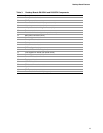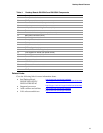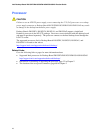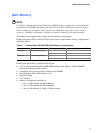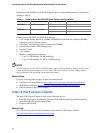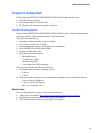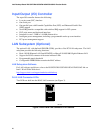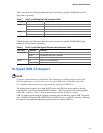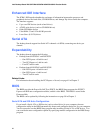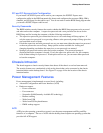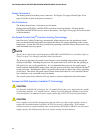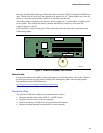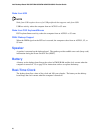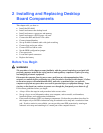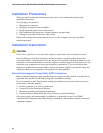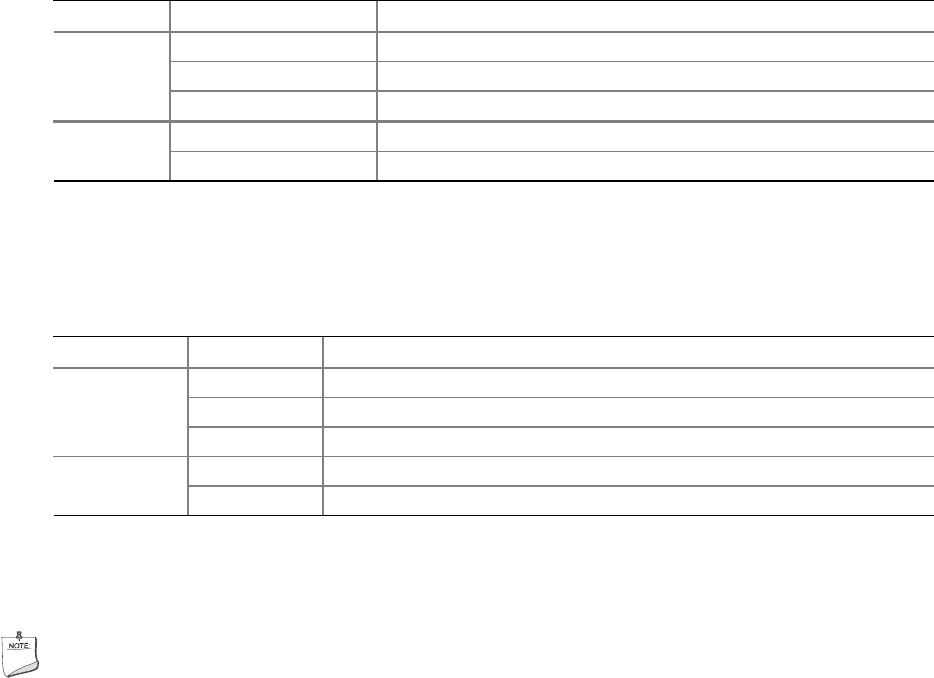
Desktop Board Features
21
Table 7 describes the LED states when the board is powered up and the 10/100 Ethernet LAN
subsystem is operating.
Table 7. RJ-45 10/100 Ethernet LAN Connector LEDs
LED Color LED State Indicates
Off LAN link is not established. Green
On LAN link is established.
Blinking LAN activity is occurring.
Off 10 Mbits/sec data rate is selected. Yellow
On (steady state) 100 Mbits/sec data rate is selected.
Table 8 describes the LED states when the board is powered up and the 10/100/1000 Gigabit
Ethernet LAN subsystem is operating.
Table 8. RJ-45 10/100/1000 Gigabit Ethernet LAN Connector LEDs
LED Color LED State Indicates
Off 10 Mbit/sec data rate is selected. Bi-color LED
Green 100 Mbit/sec data rate is selected.
Yellow 1 Gbit/sec data rate is selected.
Off LAN link is not established. Green
On (pulsing) The computer is communicating with another computer on the LAN.
Hi-Speed USB 2.0 Support
NOTE
Computer systems that have an unshielded cable attached to a USB port might not meet FCC
Class B requirements, even if no device or a low-speed USB device is attached to the cable.
Use a shielded cable that meets the requirements for a full-speed USB device.
The desktop board supports up to eight USB 2.0 ports via ICH6; four ports routed to the back
panel and four routed to two internal USB 2.0 headers. USB 2.0 ports are backward compatible
with USB 1.1 devices. USB 1.1 devices will function normally at USB 1.1 speeds.
USB 2.0 support requires both an operating system and drivers that fully support USB 2.0 transfer
rates. Disabling Hi-Speed USB in BIOS reverts all USB 2.0 ports to USB 1.1 operation. This may
be required to accommodate operating systems that do not support USB 2.0.



